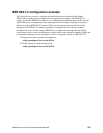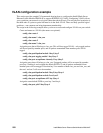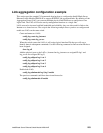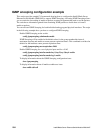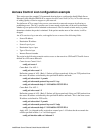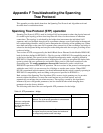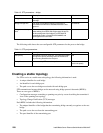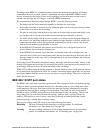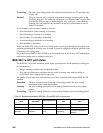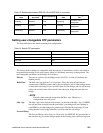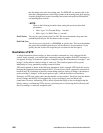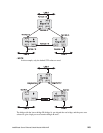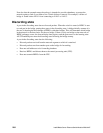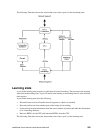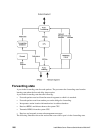Intel® Blade Server Ethernet Switch Module IXM5414E 259
The bridge sends BPDUs to communicate and construct the spanning-tree topology. All bridges
connected to the LAN on which a packet is transmitted will receive the BPDU. BPDUs are not
directly forwarded by the bridge, but the receiving bridge uses the information in the frame to
calculate the topology and, if it changes, to initiate a BPDU transmission.
The communication between bridges through BPDUs causes the following results:
• The bridge with the lowest numerical identifier is elected as the root bridge.
• Each bridge calculates its root path cost by adding the path costs for each port receiving frames
on the lowest cost path to the root bridge.
• The port on each bridge with the lowest root path cost for that bridge becomes that bridge’s root
port (in the event of a tie the port with the lowest numerical port identifier is chosen).
• For each LAN the bridge with the lowest root path cost is selected as the designated bridge (in
the event of a tie, the bridge with the lowest numerical bridge identifier is chosen) and the port
connecting that bridge to the LAN becomes the designated port (in the event of a tie, the port
with the lowest numerical port identifier is chosen).
• In the IEEE 802.1D standard, ports that are not selected as root or designated ports do not
forward frames and are known as alternate ports.
• In the IEEE 802.1w standard, a port that offers an alternate path to the root bridge but is not
selected as the root does not forward frames and is known as an alternate port. Ports that offer an
alternate connection to the same LAN as a designated port do not forward frames and are known
as backup ports.
If all bridges have STP enabled with default settings, the bridge with the lowest MAC address in the
network will become the root bridge. By increasing the priority (lowering the priority number) of a
given bridge, STP can be forced to select that bridge as the root bridge.
When STP is enabled using the default parameters, the path between source and destination stations
in a switched network might not be ideal. For example, connecting higher-speed links to a port that
has a higher number than the current root port can cause a root-port change. The goal is to make the
fastest link the root port.
IEEE 802.1D STP port states
The BPDUs take some time to pass through a network. This propagation delay can result in topology
changes in which a port that changed directly from a discarding state to a forwarding state could
create temporary data loops. Ports must wait for new network topology information to propagate
throughout the network before starting to forward packets. They must also wait for the packet
lifetime to expire for BPDU packets that were forwarded based on the old topology. The forward
delay timer is used to ensure that the network topology stabilizes after a topology change. In
addition, STP specifies a series of states a port must go through to further ensure that a stable
network topology is created after a topology change.
Each port on a bridge using STP exists in one of the following four states:
Discarding The port is blocked from forwarding or receiving packets. For additional
information, see
“Discarding state” on page 264.
Learning The port is adding addresses to its forwarding database but not yet forwarding
packets. For additional information, see
“Forwarding state” on page 266.



